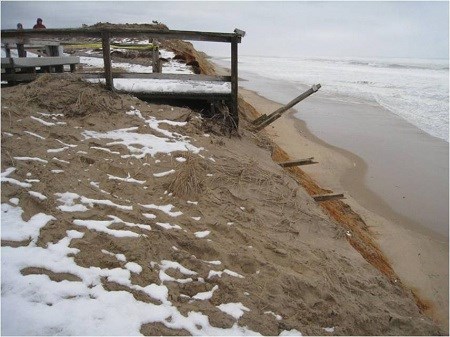
NPS Photo Climate has changed dramatically throughout history. Only 12,000 years ago (a blink of an eye geologically) Cape Cod was covered in a sheet of ice thousands of feet thick. Changes in climate have strong potential to alter biological, chemical and hydrological processes of many Cape Cod National Seashore ecosystems. Today, there is a near-consensus within the scientific community that human-induced alterations to the environment will hasten climate change. As a culture that depends on natural systems for all facets of our economy and way of life, it is important that we strive to understand the ways in which these systems are changing over time. It is a priority of the Seashore to closely monitor and better understand the effects of increases in air temperature, precipitation, and sea-level that are predicted in future decades. Established long-term ecosystem monitoring efforts, some of which date back to the 1950s, will play an important role in understanding how the physical and biological systems of the Outer Cape are changing over time. Monitoring programs are in place to investigate long-term trends in amphibian populations, coastal-marsh vegetation, and water quality, among others. These efforts will help to resolve questions regarding the resources of the Seashore as they pertain to climate change in the 21st century and beyond. To learn more about how Cape Cod National Seashore is managing its carbon footprint visit our Climate Friendly Parks pages. Visit the Climate Change website for more information about climate change and national parks. |
Last updated: July 8, 2019
